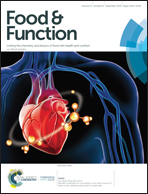 “Many Americans rely on opioids at varying dosages to help ameliorate their suffering. However, empirical evidence is mounting that opioids are ineffective at controlling non-cancer related chronic pain, and many argue the strategies meant to relieve patient suffering are contributing to the growing opioid epidemic.
“Many Americans rely on opioids at varying dosages to help ameliorate their suffering. However, empirical evidence is mounting that opioids are ineffective at controlling non-cancer related chronic pain, and many argue the strategies meant to relieve patient suffering are contributing to the growing opioid epidemic.
Concurrently, several states now allow the use of medical cannabis to treat a variety of medical conditions, including chronic pain. Needing more exploration is the impact of cannabis laws on general opioid reliance and whether chronic pain sufferers are opting to use cannabis medicinally instead of opioids.
METHODS:
This study investigates the effect of Medical Marijuana Laws (MML)s on opioid use and misuse controlling for a number of relevant factors using data from several years of the National Survey on Drug Use and Health and multivariate logistic regression and longitudinal analysis strategies.
RESULTS:
Results provide evidence that MMLs may be effective at reducing opioid reliance as survey respondents living in states with medical cannabis legislation are much less apt to report using opioid analgesics than people living in states without such laws, net other factors. Results further indicate that the presence of medicinal cannabis legislation appears to have no influence over opioid misuse.
CONCLUSION:
MMLs may ultimately serve to attenuate the consequences of opioid overreliance.”
https://www.ncbi.nlm.nih.gov/pubmed/31590091
https://www.sciencedirect.com/science/article/abs/pii/S0955395919302567?via%3Dihub

 “Δ9-Tetrahydrocannabinol-valine-hemisuccinate, a hydrophilic prodrug of Δ9-tetrahydrocannabinol, synthesized with the aim of improving the ocular bioavailability of the parent molecule, was investigated in a lipid-based nanoparticle dosage form for ocular delivery.
“Δ9-Tetrahydrocannabinol-valine-hemisuccinate, a hydrophilic prodrug of Δ9-tetrahydrocannabinol, synthesized with the aim of improving the ocular bioavailability of the parent molecule, was investigated in a lipid-based nanoparticle dosage form for ocular delivery.

 “The recent liberalisation of cannabis regulation has increased public and scientific debate about its potential benefits and risks. A key focus has been the extent to which
“The recent liberalisation of cannabis regulation has increased public and scientific debate about its potential benefits and risks. A key focus has been the extent to which  “Research in the cannabinoid field, namely on phytocannabinoids, the endogenous cannabinoids anandamide and 2-arachidonoyl glycerol and their metabolizing and synthetic enzymes, the cannabinoid receptors, and anandamide-like cannabinoid compounds, has expanded tremendously over the last few years. Numerous endocannabinoid-like compounds have been discovered. The Cannabis plant constituent
“Research in the cannabinoid field, namely on phytocannabinoids, the endogenous cannabinoids anandamide and 2-arachidonoyl glycerol and their metabolizing and synthetic enzymes, the cannabinoid receptors, and anandamide-like cannabinoid compounds, has expanded tremendously over the last few years. Numerous endocannabinoid-like compounds have been discovered. The Cannabis plant constituent  “Hemp (
“Hemp ( “It is thought that endogenous cannabinoids have a role in the analgesia induced by specific forms of stress.
“It is thought that endogenous cannabinoids have a role in the analgesia induced by specific forms of stress. “The endocannabinoid (EC) system has been implicated in the pathogenesis of several metabolic diseases, including nonalcoholic fatty liver disease (NAFLD).
“The endocannabinoid (EC) system has been implicated in the pathogenesis of several metabolic diseases, including nonalcoholic fatty liver disease (NAFLD).